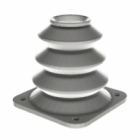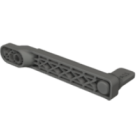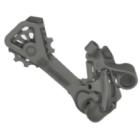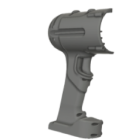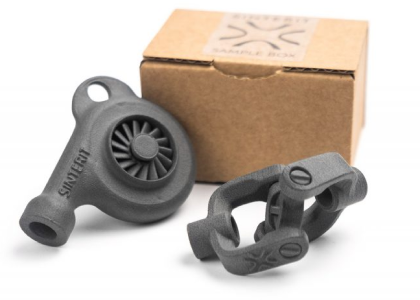7 common 3D printing myths
Despite being one of the most talked-about manufacturing technologies of the 21st century, 3D printing is still surrounded by myths and misconceptions. While the technology has matured dramatically over the past decade, outdated perceptions continue to shape how people understand its capabilities, limitations, and potential. Debunking these myths is essential to appreciating what additive manufacturing can really do — and what it can’t.
Among the most advanced methods, Selective Laser Sintering (SLS) stands out for producing durable, high-precision polymer parts used in both prototyping and full-scale manufacturing.
Myth 1: 3D printing is only for prototyping
It’s true that early 3D printers were mainly used for prototyping — fast, inexpensive ways to test design concepts. But the industry has evolved far beyond that. Today, 3D printing is a full‑scale production tool in aerospace, automotive, healthcare, and consumer goods.
Selective Laser Sintering (SLS), Multi Jet Fusion (MJF), and metal processes like DMLS or SLM produce end‑use components that meet demanding mechanical and thermal requirements. SLS printing, in particular, enables the creation of functional polymer parts that combine accuracy, strength, and surface quality suitable for final products. In many cases, these printed parts rival or even outperform traditionally manufactured equivalents, especially when lightweighting or complex geometry is required. Prototyping is just the starting point — not the boundary.
Myth 2: 3D printing can make anything instantly
Another common misconception is that 3D printing can produce any object at the press of a button. In reality, successful printing requires thoughtful design, process knowledge, and preparation. Files must be optimized for the chosen technology, materials must be conditioned, and post‑processing — such as cleaning, curing, or surface finishing — often follows the print itself.
While additive manufacturing eliminates many steps associated with traditional manufacturing, it’s still a process, not magic. Print times can range from minutes to several days, depending on size, resolution, and complexity.
Myth 3: 3D printing is too slow for production
Speed has long been seen as a limitation, but that’s changing rapidly. Modern printers can run multiple parts simultaneously, operate continuously, and integrate automation for powder handling or part removal. For low‑ to medium‑volume production, 3D printing is often faster than tooling‑based methods because it eliminates setup and mold fabrication.
In distributed manufacturing models, where parts are printed on demand and close to the point of use, the total lead time is significantly reduced — even if the actual printing process takes hours.
Myth 4: printed parts are weak or low quality
This myth stems from the early days of desktop FDM, where consumer-grade printers produced fragile plastic models. Today, industrial-grade 3D printing uses engineering polymers, metal alloys, and composites that can withstand demanding operational conditions.
For example, SLS-printed PA12 and PA11 powders exhibit high impact resistance and dimensional stability, while titanium and Inconel alloys in metal 3D printing offer comparable strength to machined components. With proper process control and post-processing, printed parts can meet ISO and ASTM standards for mechanical performance and dimensional accuracy.
Myth 5: 3D printing is environmentally harmful
While 3D printing isn’t inherently “green,” it often has a smaller environmental footprint than traditional manufacturing. Additive processes are material‑efficient — they use only what’s needed to build a part, unlike subtractive machining, which removes large amounts of waste.
Moreover, many systems now reuse excess powder, and sustainable materials such as bio-based PLA, PA11, and recycled PETG are becoming increasingly common. In powder-based systems like SLS, unused material can be recycled and reused across multiple print cycles, minimizing waste even further. Additive manufacturing also enables localized production, which reduces transport emissions and inventory waste.
Myth 6: it’s too complicated for regular use
It’s easy to assume 3D printing requires expert engineers or advanced software skills. In fact, accessibility has improved dramatically. User‑friendly interfaces, cloud‑based slicers, and automated calibration have simplified workflows for both professionals and hobbyists.
However, as with any manufacturing method, understanding the fundamentals — materials, tolerances, and process parameters — remains essential for consistent quality. Knowing how to design for additive manufacturing (DfAM) is the real key to success.
Myth 7: 3D printing will replace all manufacturing
Perhaps the most persistent myth is that additive manufacturing will make traditional methods obsolete. In truth, 3D printing complements — not replaces — CNC machining, molding, and casting. Each method has its strengths: additive for complexity and customization, subtractive for precision and scalability.
The most efficient production ecosystems use hybrid approaches, combining 3D printing for rapid iteration and complex parts with traditional methods for mass production. The future isn’t purely additive — it’s integrated.
Conclusion
3D printing has moved far beyond hobby labs and concept models. It’s a powerful, industrial‑grade technology that reshapes how we think about design, supply chains, and sustainability. Dispelling these myths allows businesses and individuals to see additive manufacturing for what it truly is — a versatile, evolving tool that’s here to stay, not a futuristic gimmick or universal solution.
Learn more about SLS 3D printing technology.
Explore also
- What is print 3D? Concept of 3D printing
- What does “3D printed” mean?
- Example of 3D printing
- How does 3D printing work?
- Slicing in 3D printing
- What do you need for 3D printing?
- 3D printing benefits
- Is 3D printer dangerous? Understanding the real risks
- 3D printing issues
- 3D printing history
- 3D printing facts
- Who uses 3D printers? Not just for engineers anymore
- Where 3D printing is used
Related categories




